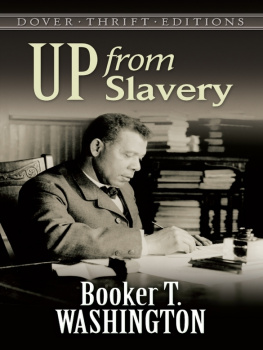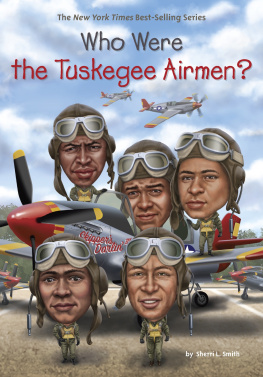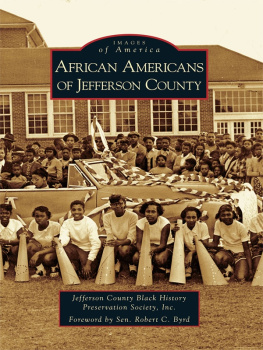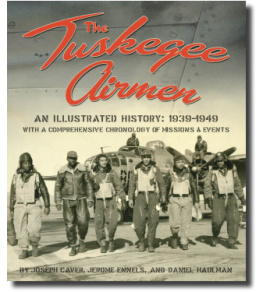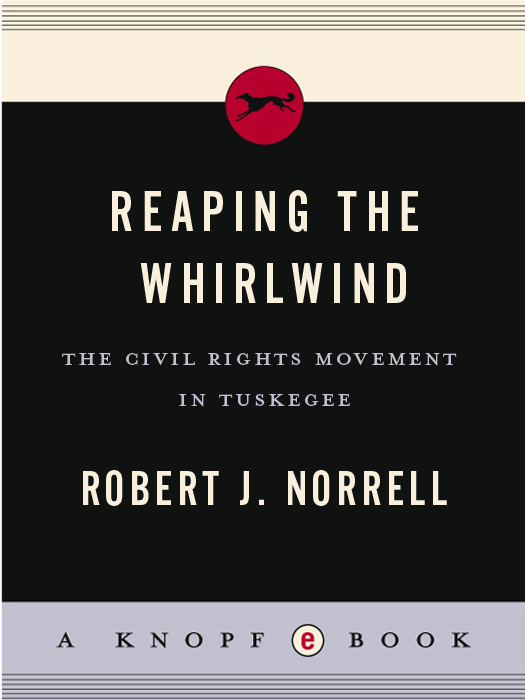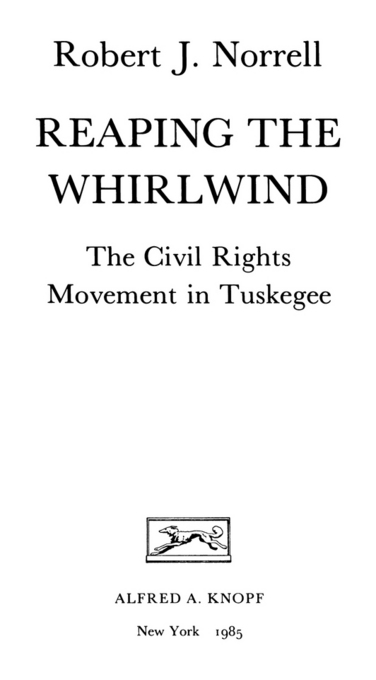THIS IS A BORZOI BOOK
PUBLISHED BY ALFRED A. KNOPF, INC.
Copyright 1985 by Robert Jefferson Norrell II
All rights reserved under International and Pan-American Copyright Conventions.
Published in the United States by Alfred A. Knopf, Inc., New York, and simultaneously in Canada by Random House of Canada Limited, Toronto.
Distributed by Random House, Inc., New York.
Portions of were originally published as Perfect Quiet, Peace, and Harmony:
Another Look at the Founding of Tuskegee Institute, in The Alabama Review, April 1983.
Copyright 1983 by the University of Alabama Press.
LIBRARY OF CONGRESS CATALOGING IN PUBLICATION DATA
Norrell, Robert J. (Robert Jefferson), II.
Reaping the whirlwind, the civil rights movement in Tuskegee.
Revision of authors thesis (Ph.D.)University of Virginia.
Bibliography: p.
1. Tuskegee (Ala.)Race relations.
2. Afro-AmericansCivil rightsAlabamaTuskegee.
3. Afro-AmericansAlabamaTuskegeePolitics and government.
4. Tuskegee Institute (Ala.) I. Title.
F 334. T 96 N 67 1985 305.800976149 8440845
eISBN: 978-0-307-82851-4
v3.1
Contents
Eight pages of illustrations will be found following
Acknowledgments
My greatest debt in the writing of this book is to Paul M. Gaston of the University of Virginia, who inspired me, as an undergraduate, to want to be a historian; who suggested a set of values and concerns that are central to American history; and who directed the doctoral dissertation of which this is a revision. As mentor, friend, and editor, he has provided the precise admixture of criticism, prodding, and praise to get me to the end of a long project. Professor Gaston deserves much of the credit for whatever merits this work may have.
I am indebted to several historians who have read drafts of this manuscript. J. Mills Thornton III of the University of Michigan brought his vast knowledge of Alabama history and his keen analytical abilities to the subject and significantly improved my understanding of it. John T. Kneebone of Harvard University raised several important questions about interpretation. Robert D. Cross, David Levin, and Edward L. Ayers, all of the University of Virginia, subjected the manuscript to careful editing. I am also grateful to Professor Cross for supporting my career in other ways over the years. Howard R. Lamar of Yale University made several useful observations about social relations in Tuskegee, of which he is a native.
A number of persons assisted me in research. William P. Mitchell provided access to the files of the Tuskegee Civic Association and patiently responded to my hundreds of questions about Tuskegee and its people. Daniel T. Williams and the late Helen Dibble of the Hollis Burke Frissell Library at Tuskegee Institute gave me access to the many useful documents in their collections. Charles G. Gomillion, Ennis Sellers, Robert D. Miller, and Alice Lee Wadsworth lent me valuable personal papers. Florida Broward Segrest answered many questions about the history of Macon County. David J. Garrow of the University of North Carolina at Chapel Hill advised me on the use of the Freedom of Information Act.
I am happy to acknowledge several personal debts incurred during the completion of this book. W. Edmund Moomaw of Birmingham-Southern College has given me encouragement and professional support. Vonda W. Fulton has tolerated with good humor my bad handwriting and bad temper through many typings of the manuscript. Ashbel Green and Peter Hayes at Alfred A. Knopf, Inc., have been patient and supportive. Dan O. Dowe made several pertinent criticisms of the manuscript and endured many long discussions about Tuskegee. My wife, Kelly Dowe, has been an unswerving supporter of this project since the beginning, despite the intrusions it has made on her life. A fine editor and a sensitive interpreter of human relations, she has influenced significantly the character of this book.
It is a pleasure to dedicate this book to my parents, Robert D. and Mary Ann Norrell, who have given me unfailing support in this, and all other endeavors.
R.J.N.
April 1984
Foreword
The civil rights movement of the 1950s and 1960s made its way to every community in the South. In Montgomery, Albany, Birmingham, Selma, and a few others, it arrived with fanfare and occupied the limelight for much of its stay. It slipped into other towns and lay low for a while before making its presence known. It had a different experience in each place, and no place was the same after it left. Each community now has a story to tell about the movement, and only when many of those stories are told will the Souths great social upheaval be well understood.
What follows is one of those stories. This is about Tuskegee, Alabama, and it focuses mainly on the efforts of blacks to gain the right to vote. It dwells on politics because much of the change and conflict in the county was manifested first and most fully in competition for control of political offices. But it also examines related changes in other institutionsparticularly families, churches, and schools. It tries to reveal the many fears that the changes caused among whites. It is about power: whites trying to keep control of their society and blacks seeking more autonomy. In a larger sense, it is the story of two communities, one white and one black, in the painful process of merging into a single, if very different, community.
This study has particular significance for the place of Booker Washington in American history. Washingtons experiment, which promised that blacks would realize full equality once they had made themselves useful to society, ultimately succeeded in Tuskegee. Well-educated, economically secure Institute professors successfully challenged white conservative control of Tuskegee after Washingtons hands-off policy toward politics was forsaken in the late 1930s. Middle-class blacks in Tuskegee demonstrated after 1940 that political rights would indeed follow from economic power. The Washington philosophy was vindicated, at least in its place of birth.
There was a pattern of conflict and change for scores of Black Belt communities across the South. Tuskegee is hardly a microcosm of the region; Macon County, for which Tuskegee is the seat of government, had a higher percentage of black populationabout eighty-four percentthan any other county in the United States in the 1960s. But the concerns of its people resembled those in the many southern rural communities where blacks held a large majority. The experience of blacks and whites in Tuskegee in the 1960s shared important similarities with what happened to people in the South Carolina low country, the Mississippi delta, and southern Georgia at about the same time. Sweeping political changes, the intervention of federal power, and the rejection by whites of the public school system characterized the history of Tuskegee and most predominantly black communities in the South in the 1960s.
This study fixes the beginning of the civil rights movement in Tuskegee at 1941. Most considerations of the history of the movement have put the starting date laterat the Brown decision in 1954 or at the sit-in movement of 1960though they usually recognized foreshadowing events of earlier years. Historians have begun to examine the 1930s and 1940s and have found not just a few tantalizing moments of protest but a widespread, if not yet mature, struggle to overthrow segregation and institutionalized racism. Here I have focused at length on the events and circumstances that led to the rapid and dramatic changes of the 1960s. Indeed, the story of the civil rights movement in Tuskegee begins with events that took place in and around the town in 1870.




